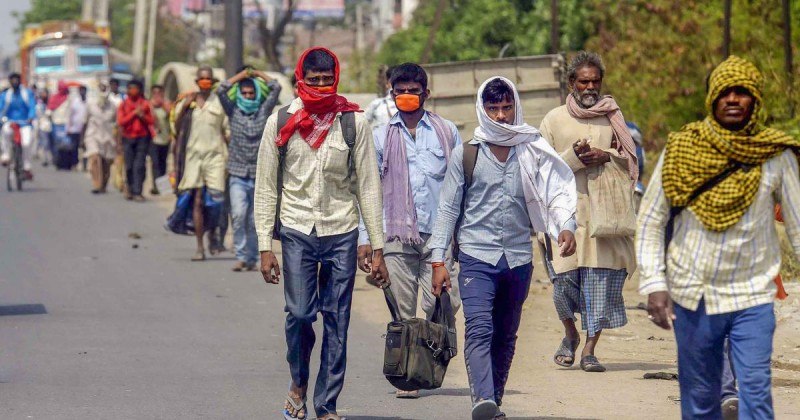The ongoing economic lockdown due to the coronavirus pandemic is sure to leave behind severe economic implications and send after shocks to an already fragile economy that is still recovering from the after-effects of demonetisation and other indicators of declining markets.
One of the sectors that is set to become the worst sufferer of the lockdown is the Indian textile and apparel industry and the crisis that it has fallen into needs the immediate attention of the government if we want to see it revive.
This sector is extremely important for the Indian economy because it is considered to be the second largest source of employment for the Indian people after agriculture. The sector directly gives employment to about 45 million workers directly and to 60 million workers indirectly.
The coronavirus pandemic and the associated lockdown have come as a severe blow to this sector because the sector had already not recovered fully from the after-effects of demonetisation. There is no denying the fact that the lockdown is an essential step to contain and control the spread of the coronavirus but the need to manage the economic implications and the aftermath of the lockdown are just as important. Throughout the world, there is a consensus that even after the phase of the lockdown is over and the world comes to reality with the normalcy and resumption of regular economic activity- we are all collectively in for a prolonged period of recession of the kind that the world may not have seen since the time of the American nightmare called the Great Depression.
There is no doubt about the fact that the economic lockdown will leave unprecedented impacts on the Indian economy and especially the textile sector which was already experiencing a fragile health.
It is true that the shutting down of factories and stores for such a prolonged period will cost India’s textile industry dearly. The export sector has already experienced a setback because cancelled orders and the drying up of all future orders seems to have become the new normal. Amidst this looming crisis, people believed that domestic consumption of the products of the textile industry could be India’s last resort but with a closure of all forms of commerce even inside the country, stakeholders don’t have any choice and no options.
Massive Employment, Massive Setbacks Hit Textile Industry
The urban centres of India that are home to the bulk of textile retailers and garment factories are known to be sources of employment for millions of skilled and semi-skilled Indians. So the economic lockdown will surely mean a massive blow to the industry, and if enough attention is not paid to the industry, millions of workers may lose their jobs. Export orders and domestic demands are both crumbling, factories and outlets are both faced with the challenge of coping up or bridging the losses that have been incurred in the period of the lockdown.
These restrictions will unleash many retailers and factory owners to take up stringent cost cutting measures including wage cuts, laying off of the employees and other stringent measures to cut down on production costs. What is also important to acknowledge here is the fact that for the unskilled and semi-skilled people who work in these industries, work from home is hardly an option and thus they are now left without any source of income. In some of the most backward districts of the country, such units will be compelled to cut wages and compensate for loses by laying off a large section of the employees or asking them to work for tremendously long hours without pay. The stress on the textile industry is evident. But what can policy makers do at this time? What measures can be taken up institutionally and how will the sector get back to its feet in the coming months?
Here are some measures to help the textile sector to recover in the face of extreme loss
- Measures for GST Refund
One of the best ways to recover the losses that have been incurred in the period of the lockdown, is to all for a refund of the GST payments in part or full or the past six months. This will help cover the entire gamut of stakeholders, right from the handloom weavers in remote corners of the country as well as shopkeepers and traders in towns and cities. This step would be significant in helping the government tackle the losses incurred in the phase of the lockdown. There is also a need to reduce GST rates for all textile industries so that the industry gets sufficient time to recover
- Wage Support
The economic fallout that has taken pace due to the lockdown will need the government’s support if the industry is to be revived. If the government provides assistance and helps the industry then the problem of wage cuts and laying off of employees can be avoided at a mass scale. The government may find it difficult to pay for the wage loss of all employees, but it must also consider that the textile industry is in severe need of help. If the government provides support of an average of Rs 5,000 per month, then at least the starvation of unemployed workers can be tackled to some extent.
It is also required that the government ensures that such aid is widely disseminated and reaches out directly to the affected population. These innovative measures will help both employees in the organised apparel sector as well as those in the informal textile sector that accounts for the employment of a huge chunk of the Indian workforce. The industry must also be revived through sustained support structures and low interest loans in the aftermath of the lockdown.
The sector is very important for India as it provides a source of employment to millions of people. Prime Minister Narendra Modi’s own constituency, Varanasi represents the heart of India’s textile hub and employees thousands of people. A large number of ordinary Indians depend on the textile industry for livelihood.
There is an urgent need for our government to come forward and take up measures to address the fiscal loss and the problems that the sector will experience in the aftermath of the lockdown.
The textile and apparel industry needs special attention as the second biggest source of employment in the country.
Thus it is very important for the government to provide a protective shield for the industry against the losses that the industry will continue to experience even in the months after the lockdown. If the industry is to sustain itself and recover the losses that have been incurred in the recent days, government support and aid will be the key.














